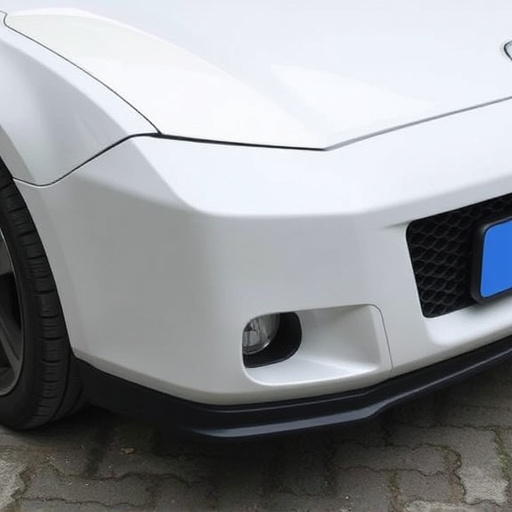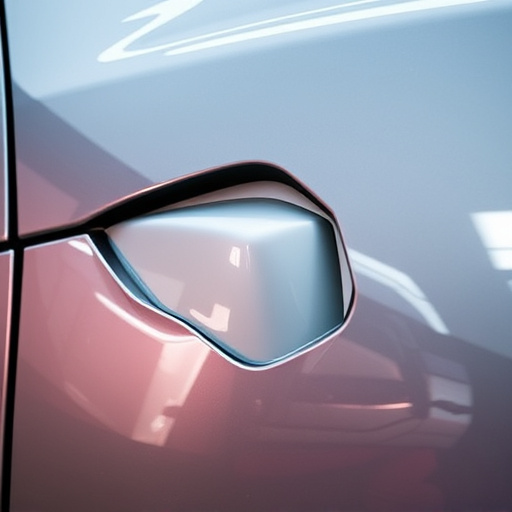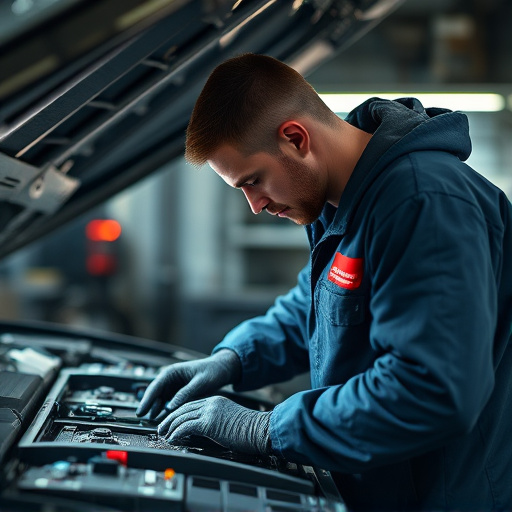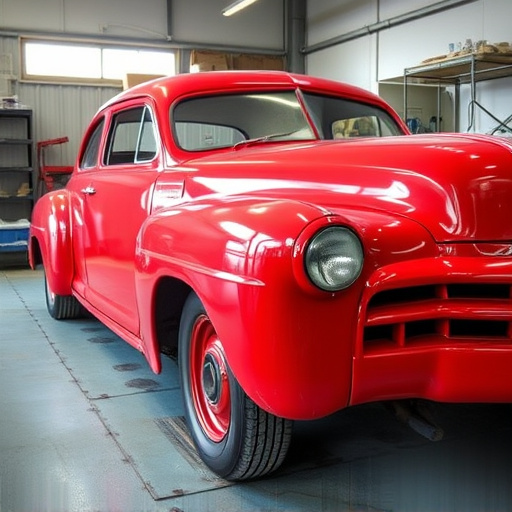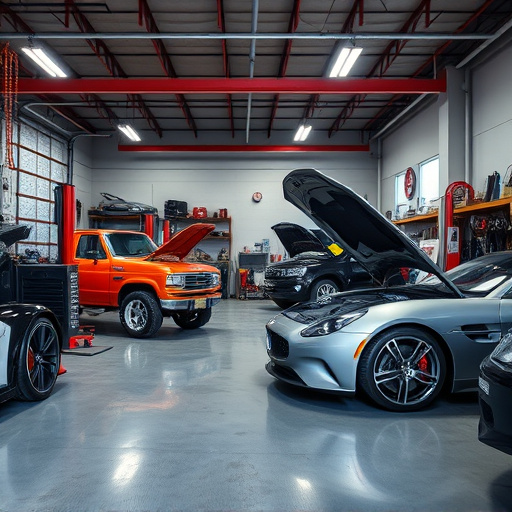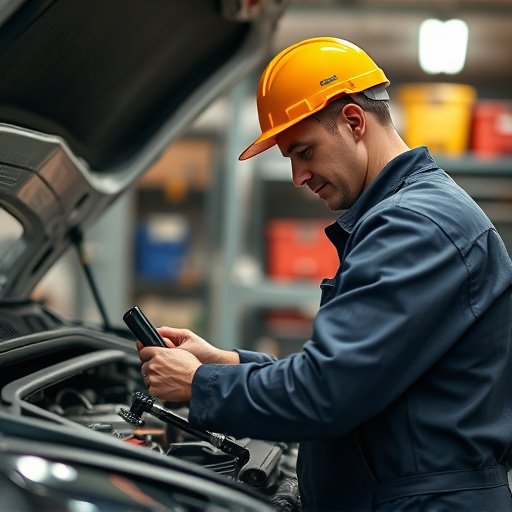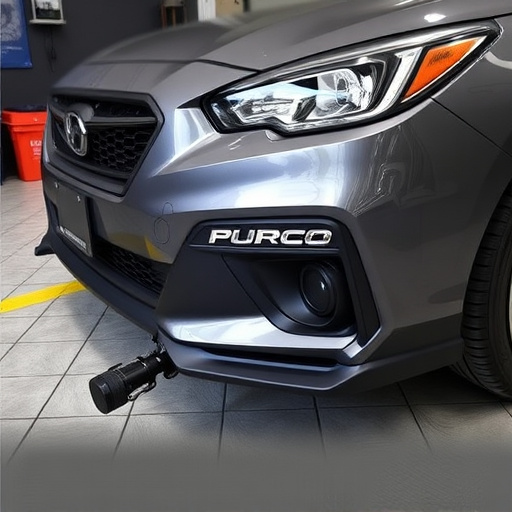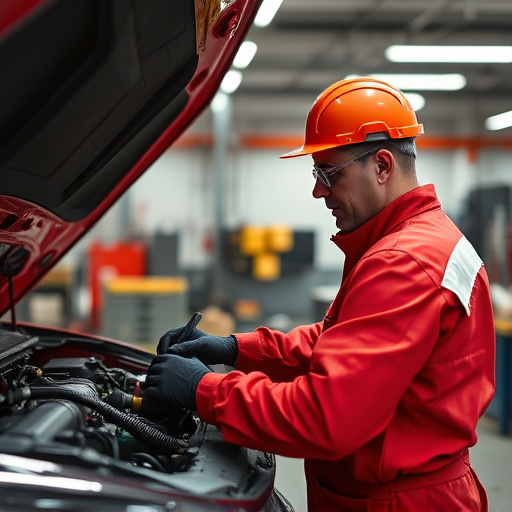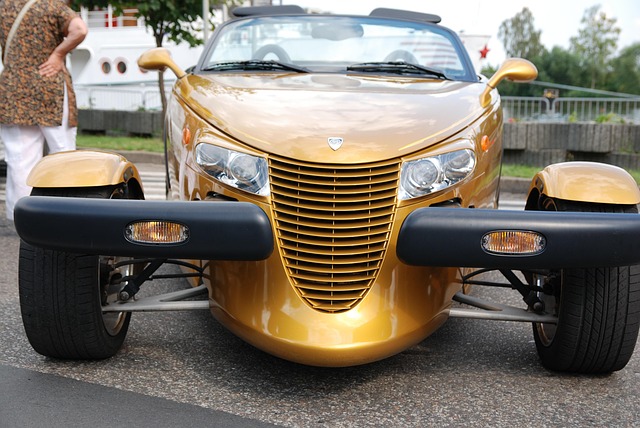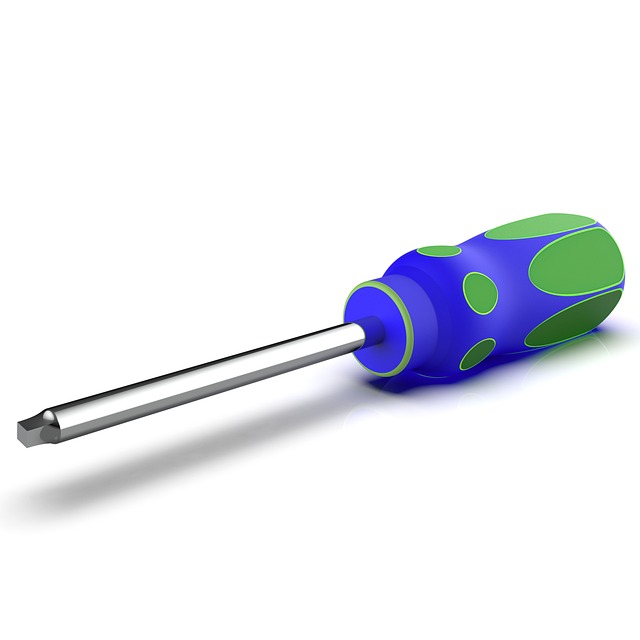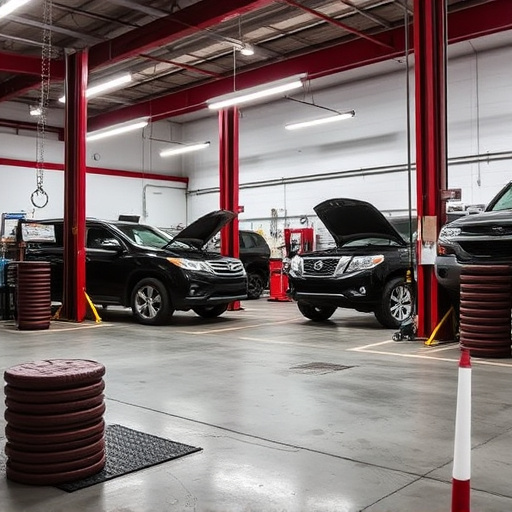Bumper scratch repair is a cost-effective solution for revitalizing vehicle bumpers, addressing aesthetic issues without extensive metalwork. The process involves cleaning, applying color-matched adhesives and fillers, sanding, and polishing to blend damaged areas seamlessly with the original bumper texture and color. Auto collision centers use specialized tools like pneumatic dent pullers, rotation polishes, and buffer machines for efficient and professional results. Choosing the right tools based on scratch depth and material is crucial; high-quality tools save time, money, and ensure durable, aesthetically pleasing repairs, catering to both auto enthusiasts and owners.
Bumper scratch repair is a popular service, offering a cost-effective way to revive damaged car bumpers. This article delves into the world of bumper scratch repair tools and techniques. We’ll guide you through the process, explaining the materials used and the steps involved in restoring your bumper’s appearance. Discover the top tools designed for efficient bumper scratch removal, ensuring a seamless and professional repair. Additionally, we provide tips to help you choose the right tools for your specific project.
- Understanding Bumper Scratch Repair: The Process and Materials Involved
- Popular Tools for Efficient and Effective Bumper Scratch Removal
- Tips for Choosing the Right Tools for Your Bumper Scratch Repair Project
Understanding Bumper Scratch Repair: The Process and Materials Involved
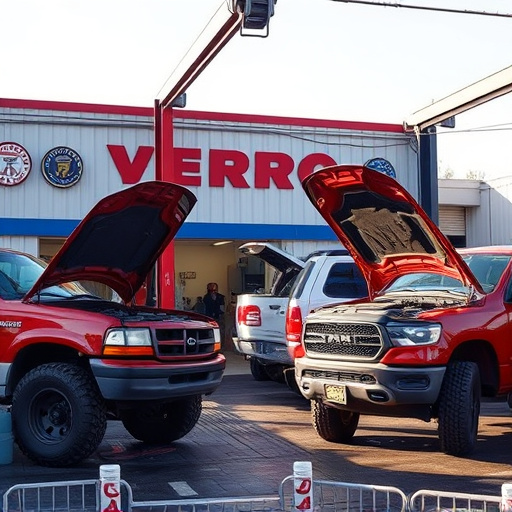
Bumper scratch repair is a specialized process designed to restore the appearance and integrity of vehicle bumpers, addressing aesthetic concerns without extensive metalwork. It involves the careful application of specific materials to fill and smooth out scratches, creating a seamless finish that matches the bumper’s original texture and color. This technique is particularly valuable for minor scuffs and dents, offering a cost-effective alternative to replacing entire bumpers.
The process begins with thorough cleaning and preparation of the damaged area. Specially formulated adhesives and fillers are then applied, matched to the bumper’s color for a discreet repair. As these materials set, they form a solid base for subsequent sanding and polishing steps. Skilled technicians use fine-grit sandpaper to achieve a smooth surface, blending seamlessly with the surrounding bumper material. This meticulous process ensures that once the scratch is filled and smoothed, it becomes virtually invisible to the naked eye. Whether on a Mercedes Benz or any other vehicle, proper bumper scratch repair not only enhances the car’s curb appeal but also preserves its structural integrity, making it an essential service for auto enthusiasts and owners alike.
Popular Tools for Efficient and Effective Bumper Scratch Removal

When it comes to bumper scratch repair, efficiency and effectiveness are paramount. Professional auto collision centers have turned to a variety of specialized tools to streamline the process, providing top-notch results for even the most stubborn dents and scratches. Among the popular choices are pneumatic dent pullers, which use compressed air to gently remove damage without damaging the surrounding surface. These tools come in various sizes, allowing technicians to tackle both minor nicks and more extensive vehicle dent repair.
Additionally, rotation polishes and buffer machines play a crucial role in refining the bumper’s finish after scratch removal. These powerful tools combine abrasive compounds with spinning pads to smooth out imperfections, restoring the bumper to its original gloss. Many modern systems offer adjustable settings, enabling precise control over the level of agitation, which is particularly important for different paint types and scratch depths. This multi-step approach ensures that not only are bumper scratches effectively removed, but also that the overall appearance of the bumper repair is seamless and professional.
Tips for Choosing the Right Tools for Your Bumper Scratch Repair Project

When embarking on a bumper scratch repair project, selecting the right tools is key to achieving professional results and ensuring efficiency in your automotive body shop. The market offers various options, each with its unique advantages and applications. Start by assessing the depth and extent of the scratch; for shallow scratches, you might only need a mild polish or a cutting compound, while deeper ones may require more aggressive tools like a rotary tool with specific bits designed for metal restoration.
Consider the material of your bumper—plastic or metal—as this will influence the tools you choose. Plastic bumpers often benefit from thermal plastic welding tools and filler materials, whereas metal bumpers might need frame straightening equipment to address deeper damage. Remember, investing in high-quality tools can save time and money in the long run, ensuring your repairs are durable and aesthetically pleasing.
In conclusion, effective bumper scratch repair involves understanding the process, selecting the right materials and tools, and choosing them wisely based on your project’s unique needs. The right tools can significantly enhance efficiency and quality outcomes, ensuring your vehicle’s exterior looks as good as new. By familiarizing yourself with the options available in bumper scratch removal, you’ll be well-equipped to tackle these repairs confidently.

